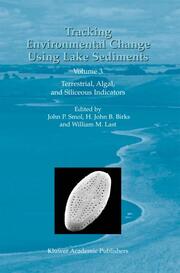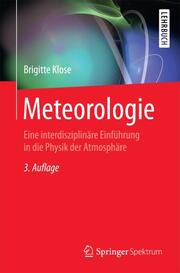Tracking Environmental Change Using Lake Sediments 3
Terrestrial, Algal, and Siliceous Indicators, Developments in Paleoenvironmental Research 3
Bibliografische Daten
ISBN: 9781402006814
Sprache: Englisch
Umfang: xxv, 371 S.
1. Auflage 2002
gebundenes Buch
Erschienen am
30.06.2002
Themenwelten
- Belletristik & Lyrik
- Krimi
- Kinder- und Jugendbuch
- Bilderbücher
- Familie
- E-Reader
- Hörbuch für Erwachsene
- Hörbuch für Kinder
- Reise
- Landkarten & Stadtpläne
- Kalender
- Politik & Wirtschaft
- Gesundheit
- Demenz
- Kochen
- Natur & Tiere
- Regionalia
- Körper und Seele
- Hobby & Basteln
- Humor & Nettigkeiten
- Geschichte & Kultur
- Schulbuch
- Lernhilfen
- Pädagogik
- Psychologie
- Partnerschaft & Erotik
- Fremdsprachige Literatur
- Theologie & Philosophie
- Fantasy & SciFi
- Lifestyle
- New Adult
- Influencer & Blogger
- Graphic Novel
- Manga
- Tickets
- Sprachen
- Biographien
- Sport
- Wissen
- Recht
- Beruf & Karriere
- EDV
- Fahrzeuge
gebundenes Buch
Lieferbar innerhalb 2- 3 - Wochen (soweit beim Lieferanten verfügbar)
Beschreibung
Biology Distribution and ecology Taphonomy and preservation Field sampling and coring Laboratory procedures Data analysis and interpretation Summary Acknowledgements References 9. Chrysophyte scales and cysts. B. A. Zeeb & J. P. Smol 203 Introduction Taxonomy and nomenclature Methods Paleolimnological applications Future research directions Summary Acknowledgements References 10. Ebridians. A. Korhola & J. P. Smol 225 Introduction Morphology, taxonomy and preservation in the sediments Methodological aspects Brief history of use of ebridians in palaeoecological research Indicator value and future research priorities Summary Acknowledgements References 11. Phytoliths. D. R. Piperno 235 Introduction and history Phytolith production and taxonomy Laboratory methods Applications of phytolith analysis in lake sediments Summary of the major results Other potential applications of phytoliths in lake sediments Summary Acknowledgments References x 12. Freshwater sponges. 253 T. M. Frost Introduction Sponge species and their distribution Sponge life history Sponge spicules Paleolimnological studies using freshwater sponges Techniques for assessing sponge spicules in sediments Future applications of sponges in paleolimnology Summary Acknowledgements References 13. Siliceous protozoan plates and scales. M. S. V. Douglas & J. P. Smol 265 Introduction History and taxonomy Ecology Paleoecological potential Laboratory methods Data presentation Paleolimnological applications Other related siliceous indicators Summary Acknowledgements References 14. Biogenic silica. D.J. Conley & C.L Schelske 281 Introduction and history Methods Applications Future directions Summary Acknowledgements References 15. Sedimentary pigments.
Auf die Wunschliste
160,49 € inkl. MwSt.
Autorenportrait
John P. Smol is a professor in the Biology Department at Queen's University (Canada), with a cross-appointment at the School of Environmental Studies. He co-directs the Paleoecological Environmental Assessment and Research Lab (PEARL). Professor Smol is co-editor of the Journal of Paleolimnology and holds the Canada Research Chair in Environmental Change. William M. Last is a professor in the Department of Geological Sciences at University of Manitoba (Canada) and is co-editor of the Journal of Paleolimnology.
Inhalt
Preface. The Editors. Aims & Scope of Developments in Paleoenvironmental Research Book Series. Editors and Board of Advisors of Developments in Paleoenvironmental Research Book Series. Contents of Volumes 1 to 4. Safety Considerations and Caution. Dedication. List of Contributors. 1. Using biology to study long-term environmental change; J.P. Smol, et al. 2. Pollen; K.D. Bennett, K.J. Willis. 3. Conifer stomata; G.M. MacDonald. 4. Plant macrofossils; H.H. Birks. 5. Charcoal as a fire proxy; C. Whitlock, C.P.S. Larsen. 6. Non-pollen palynomorphs; B. van Geel. 7. Protozoa: testate amoebae; L. Beyens, R. Meisterfeld. 8. Diatoms; R.W. Battarbee, et al. 9. Chrysophyte scales and cysts; B.A. Zeeb, J.P. Smol. 10. Ebridians; A. Korhola, J.P. Smol. 11. Phytoliths; D.R. Piperno. 12. Freshwater sponges; T.M. Frost. 13. Siliceous protozoan plates and scales; M.S.V. Douglas, J.P. Smol. 14. Biogenic silica; D.J. Conley, C.L. Schelske. 15. Sedimentary pigments; P.R. Leavitt, D.A. Hodgson. Glossary, Acronyms and Abbreviations. Subject Index. 
















